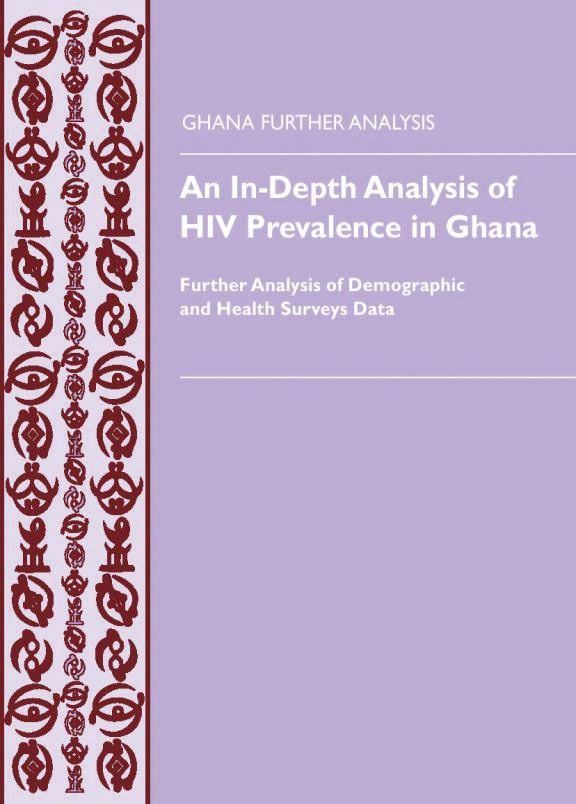- PUBLICATIONS
- JOURNAL ARTICLES
- ACCESS PUBLICATIONS
Publications Summary
- Document Type
- Further Analysis
- Publication Topic(s)
- HIV/AIDS
- Country(s)
- Ghana
- Survey
- Ghana DHS, 2003
- Language
- English
- Recommended Citation
- Akwara, Priscilla A., Gabriel B. Fosu, Pav Govindasamy, Silvia Alayon, and Ani Hyslop. 2005. An In-Depth Analysis of HIV Prevalence in Ghana: Further Analysis of Demographic and Health Surveys Data. DHS Further Analysis Reports No. 46. Calverton, Maryland, USA: ORC Macro.
- Download Citation
- RIS format / Text format / Endnote format
- Publication Date
- April 2005
- Publication ID
- FA46
